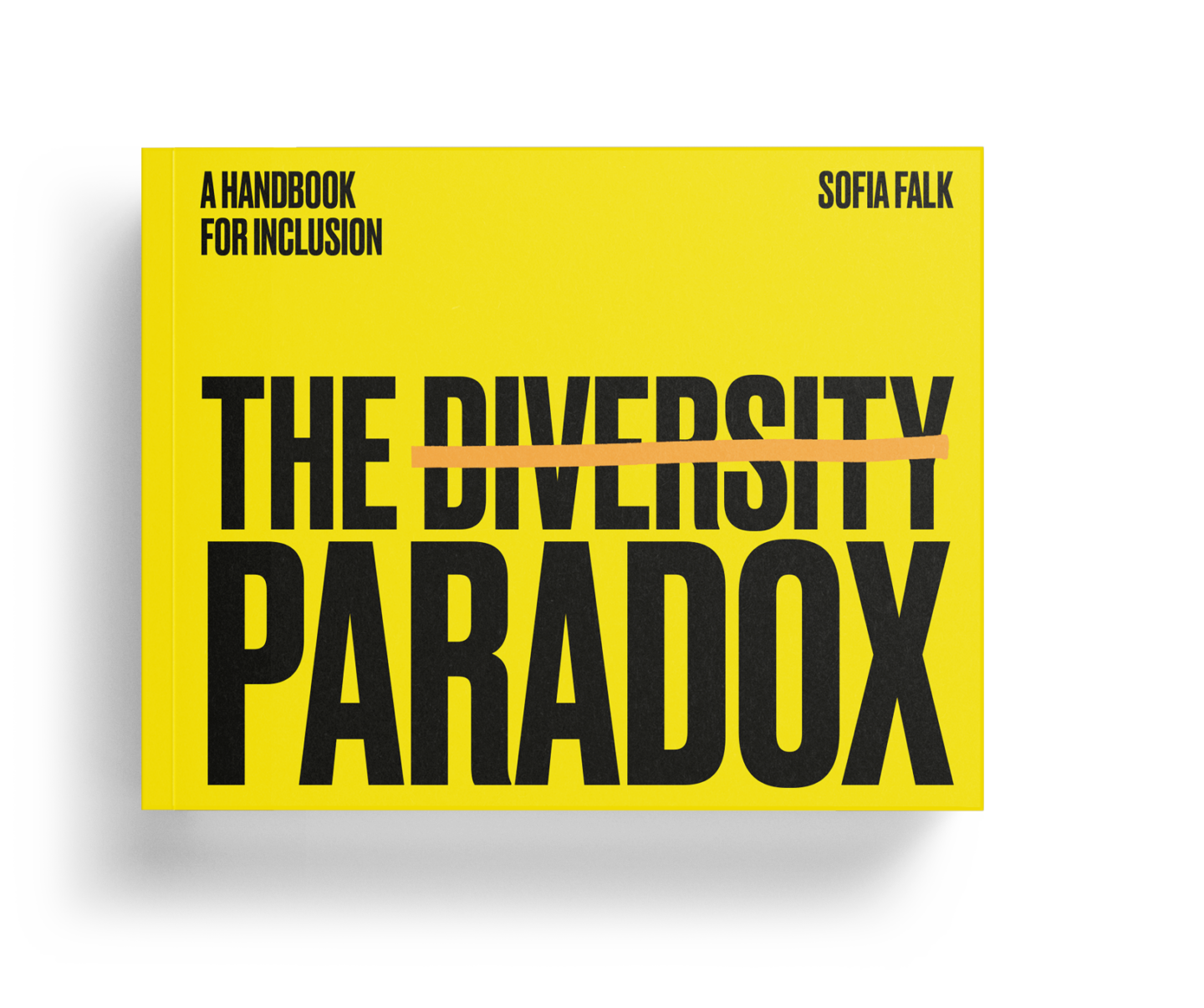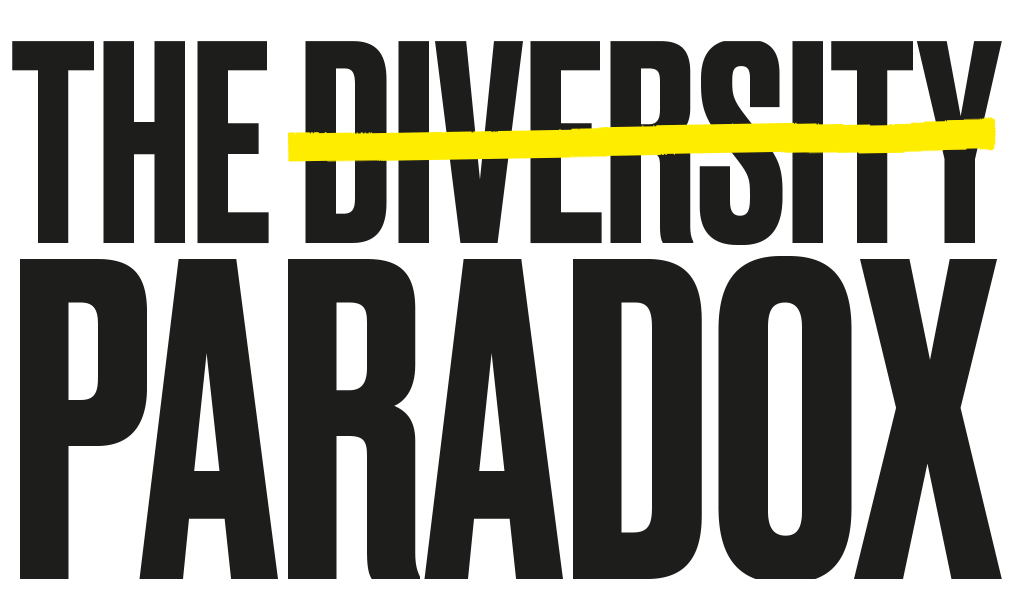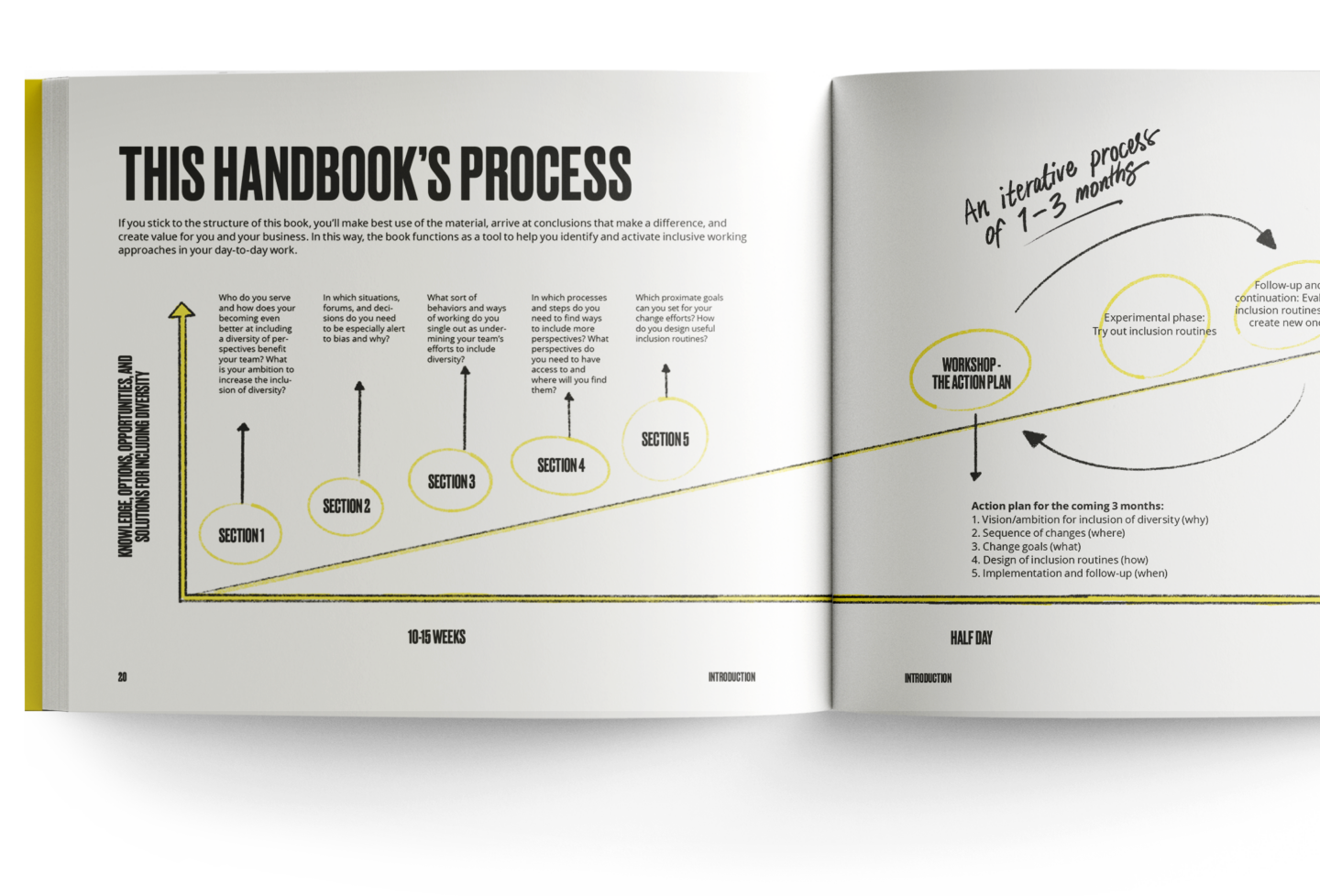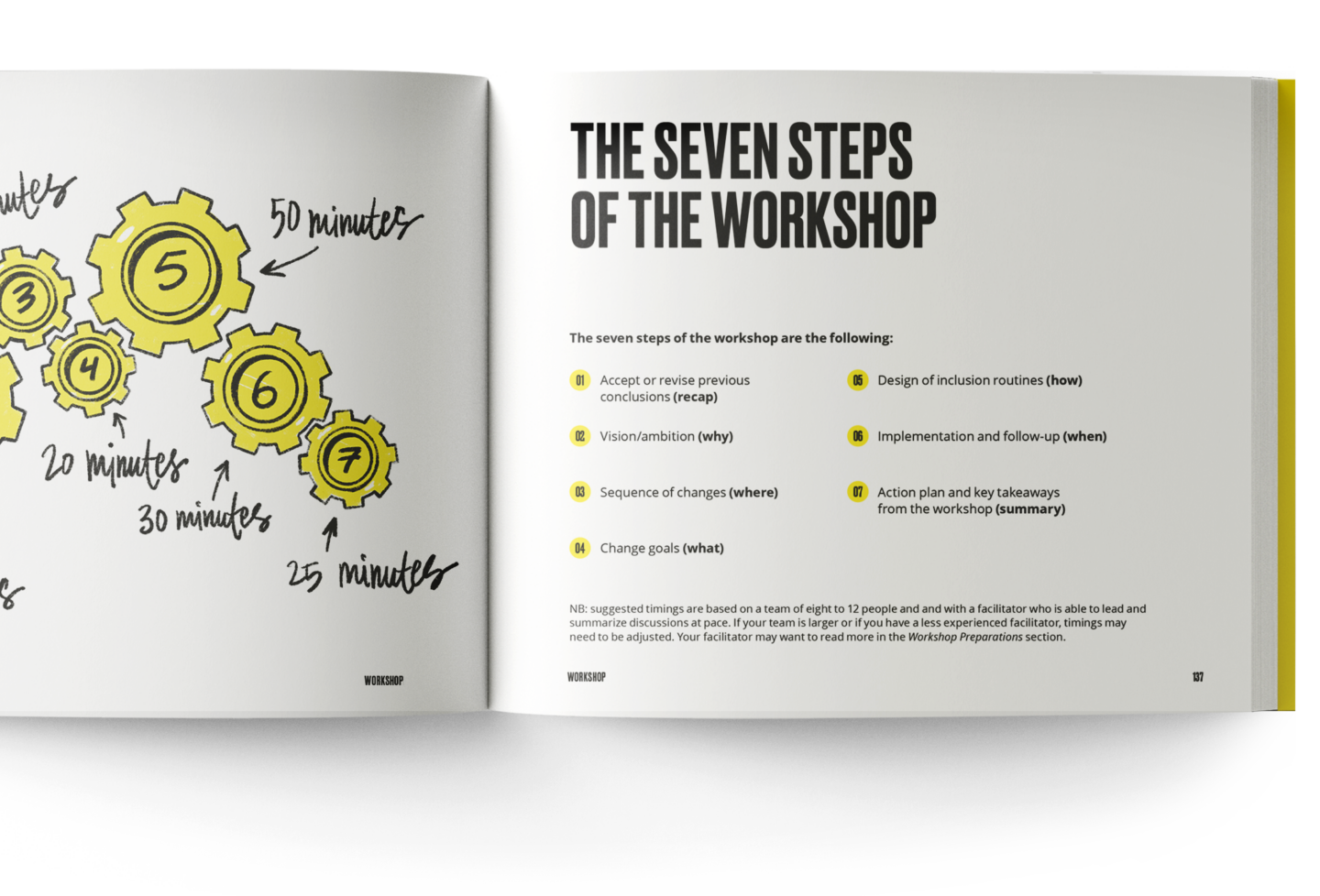


HOW IT WORKS
The Diversity Paradox is a handbook for teams that want to become better at including diversity – and in doing so, make better decisions and prioritize approaches that create value for the team and their business.
It is structured as a solutions-based study circle, where reading and reflection is done individually and in groups. The content is divided into five sections and is intended to be used over a period of five to ten weeks. Once the team has completed the sections, they’ll be ready to hold a workshop which will result in an action plan outlining why, how, and when to try out inclusion as a way of working.
Taken together, the different sections of the book provide the readers (the team) with the inspiration and information needed to map a current state step-by-step, identify a desired future state, and consider methods for incorporating an inclusive approach in everything they do. The handbook lets the readers become experts in their own business and increase their ability to create solutions that help them, right now. Essentially, the handbook functions as a framework in which the team fills in the content themselves.


CONTENT
The five sections are structured in much the same way as each other and contain:
1) reading material that each member of the team reads on their own so that the team has the same point of reference;
2) an individual reflection where each member of the team applies their newly gained perspective on the team’s reality by scrutinizing their ways of working;
3) a group reflection where the team members jointly share their insights and reflections from the section and find relevant patterns; and
4) at the end of the group reflection, agree on conclusions, prioritize or take decisions.
After the fifth section there’s a step-by-step guide that helps the team summarize everything they have discovered as they’ve worked through the handbook, and create an action plan to start applying their insights and solutions on a daily basis.


SECTION 1
CONCEPTS
In this section, we look at the concepts of diversity and inclusion. We go through how they relate to each other. We look at some examples of how a business can be positively affected by including diversity – and examples of the exact opposite. At the end of the section, the team works together to develop a definition of why the inclusion of diversity needs to be prioritized in their particular team.
SECTION 2
THE INDIVIDUAL
In this section, the team will explore one of the first – and greatest – challenges related to the inclusion of diversity: the fact that our brains work against us, often without us realizing it. The readers get to learn why the human brain is prejudiced and engages in flock behaviors, even when doing so is far from optimal in terms of outcomes. When the team is done reading this section, they’ll have an idea of the situations in which they should be especially aware of the voice inside our heads and identify the brain’s attempts at sabotage.
SECTION 3
THE GROUP
This section elaborates on how group mentality and our willingness to fit in stand in the way of our attempts to include diversity. Because we have a desperate need to belong. We’re even willing to adjust our behaviors and opinions so we don’t get left out. The behaviors that get the most space in a team will set the rules for how we should think and act to fit in. Which of these behaviors promote the inclusion of diversity? And which stand in the way? This section will help the team identify the behaviors they should amplify and where they need to rethink if they want to become better at including diversity.
SECTION 4
THE PROCESSES
In this section, we talk about how processes and routines in an organization can help or undermine work on including diversity. We explore how teams can adjust their processes, routines, and working methods so that they trigger different types of inclusive behaviors when teams need them most. In addition, the readers get to try one of the most important steps in the concluding workshop: to shed light on their processes to find the forums, decisions, and situations in which they need to include more perspectives.
SECTION 5
GOALS AND SOLUTIONS
This concluding section will give the readers the final pieces of the puzzle to help them succeed in including diversity. The inspiration in this section will increase the quality of the team’s efforts to develop specific goals and create solutions that encourage inclusive behavior on a daily basis. When the team have completed this section, they’ll be ready to create a realistic and feasible action plan in the concluding workshop.
WORKSHOP
THE WORKSHOP
The team is now ready for the culmination of the handbook: the workshop. The result of the workshop will be an action plan outlining what the team should do in the coming three months to start incorporating inclusion of diversity into how they work and thereby improve their results. The action plan will not solve all the challenges that might exist in the team. However, they will be able to start a change journey and try things out! When the three months are up, the team can redo parts of the process to continue their change journey. After another three months, they can do it all again and again.